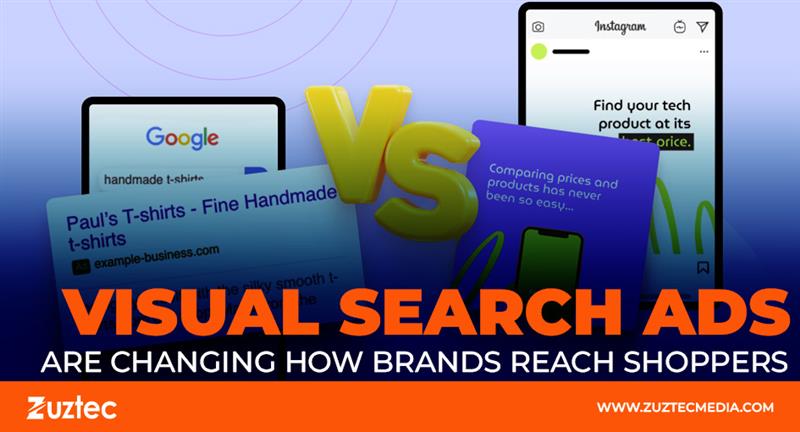
Visual Search Ads Are Changing How Brands Reach Shoppers
Digital marketing continues to evolve as new technologies reshape how consumers discover products online. One of the latest advancements attracting significant attention is visual search. Instead of typing keywords, users can now search by uploading images or using their phone cameras. This growing behavior is creating new advertising opportunities, especially with the rise of visual search ads.
As platforms like Pinterest, Google Lens, and even Amazon improve their visual recognition capabilities, more people are turning to image-based search for convenience and accuracy. Imagine seeing a jacket on someone, taking a quick photo, and instantly being shown similar options available to purchase. This is the power of visual search—it connects real-world inspiration to digital shopping in seconds.
For advertisers, this change means it’s no longer just about written keywords. Instead, visuals play a direct role in customer discovery and conversion. Brands that want to stay competitive in 2025 and beyond must understand how visual search works and how to integrate it into their digital strategy. It offers the ability to meet customers exactly when they’re interested, often with stronger purchase intent than traditional browsing.
This article will explore how visual ads function, how to optimize your campaigns for them, and why they matter in a world moving toward faster, more intuitive online experiences. As image-driven discovery becomes the norm, embracing visual search can provide a major competitive advantage.
How Visual Search Ads Work And Why They Matter
These ads are a form of digital advertising that appears in response to image-based queries. Instead of relying on text input, users take a photo or upload an image, and platforms like Google Lens or Pinterest scan the visual elements to identify relevant products or information. The platform then displays ads that best match the visual content.
For example, someone might see a piece of furniture at a friend’s house, take a picture, and instantly find similar items from different retailers. If your product catalog is optimized for visual recognition, your brand could be the one that appears in that moment.
To make the most of visual ads, businesses should use high-quality product images, label them accurately with alt text and metadata, and submit them through structured feeds on platforms that support visual search. This improves the chances that your products will be indexed correctly and shown to the right audience.
Optimizing Product Content For Visual Search Discovery
For visual search ads to be effective, your content needs to be structured for image-based queries. Start by focusing on product photography. Use clear, well-lit, high-resolution images with neutral backgrounds whenever possible. The more detail an image has, the easier it is for search engines to recognize and categorize it.
Next, be sure to add descriptive file names and alt text that explain exactly what the image shows. This information helps algorithms understand the content and match it with relevant search results. For example, instead of naming a file “IMG_1003,” use something like “blue-leather-office-chair-side-view.”
Structured data is also essential. Adding schema markup to your website helps search engines better understand your product attributes, such as color, size, brand, and material. This additional context allows your content to appear in the most relevant search results, including visual ones.
Platforms Leading The Way In Visual Search Innovation
Several major platforms are pushing the boundaries of visual search, offering new advertising formats that brands can leverage. Google Lens is one of the most well-known, allowing users to search what they see through their phone camera or an uploaded photo. For advertisers, this means products listed on Google Shopping can appear directly in these results.
Pinterest is another leader, especially when it comes to product discovery. Their visual search tool allows users to tap on specific parts of an image to find similar items, and advertisers can promote pins that show up in those results. This makes Pinterest a strong platform for lifestyle brands and retailers in fashion, home decor, and beauty.
Social platforms like Instagram and Snapchat are exploring augmented reality and camera-based commerce, which opens up new frontiers in visual advertising. These tools allow users to virtually try on products or scan objects in real-time, then view ads or recommendations tailored to their search.
Visual Search Advertising As A Key Part Of Future Strategy
Looking forward, visual search advertising is set to play a more central role in digital marketing. As consumers grow more comfortable with using images instead of words to find what they need, brands must shift their strategies accordingly. This includes rethinking how products are photographed, tagged, and promoted across platforms.
One advantage of visual search is that it shortens the path from interest to purchase. A user who sees a product, snaps a picture, and is immediately shown purchase options is much closer to conversion than someone conducting a general keyword search. This higher intent makes visual search advertising highly valuable in competitive markets.
In conclusion, visual search ads are no longer a future trend—they’re an emerging reality that’s already reshaping how people shop and interact with brands. By preparing now and optimizing for image-driven discovery, businesses can ensure they stay ahead of the curve. In 2025 and beyond, those who embrace visual search will be best positioned to turn consumer curiosity into sales and long-term loyalty.

